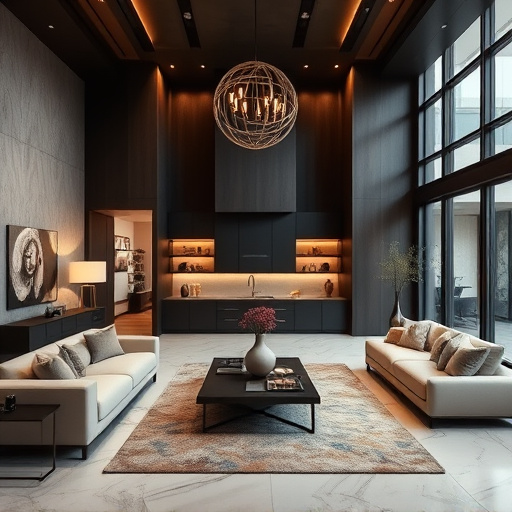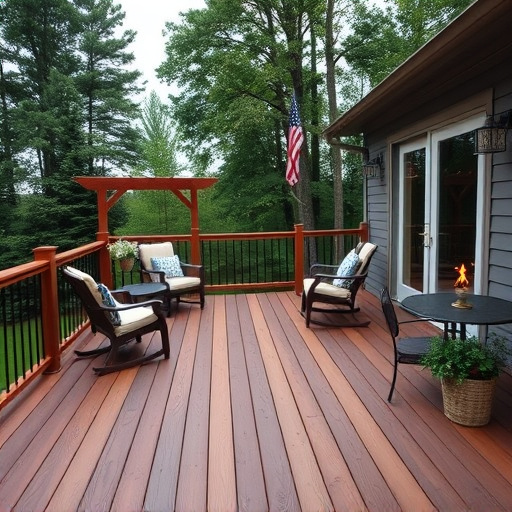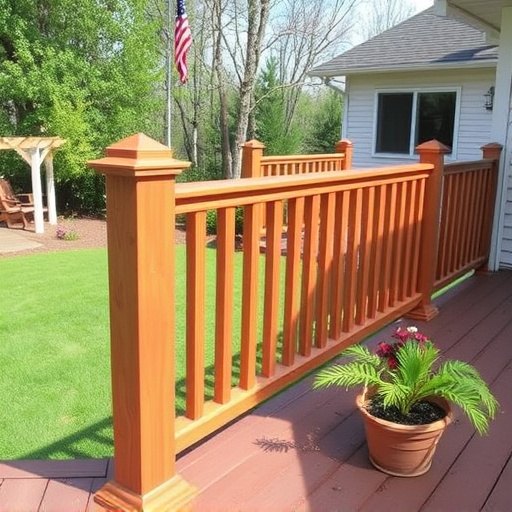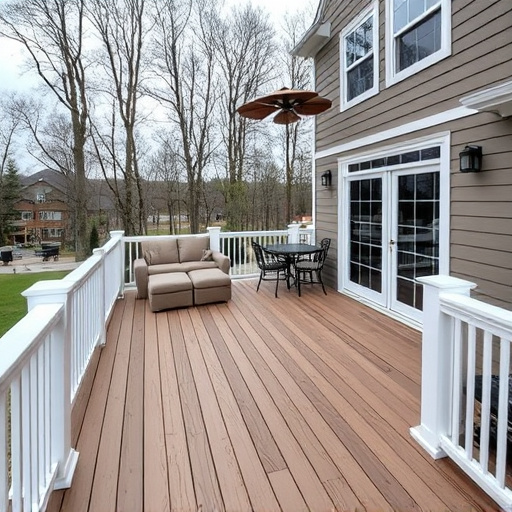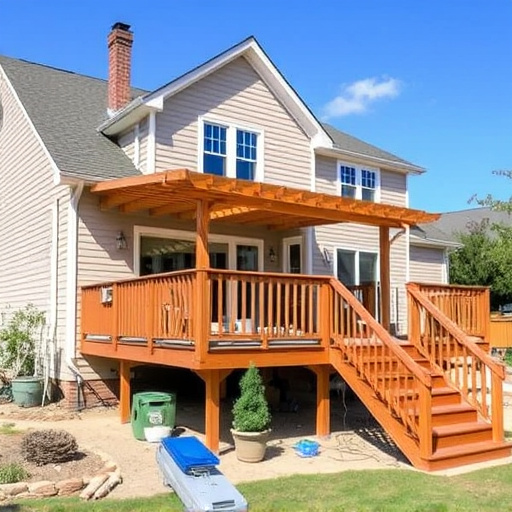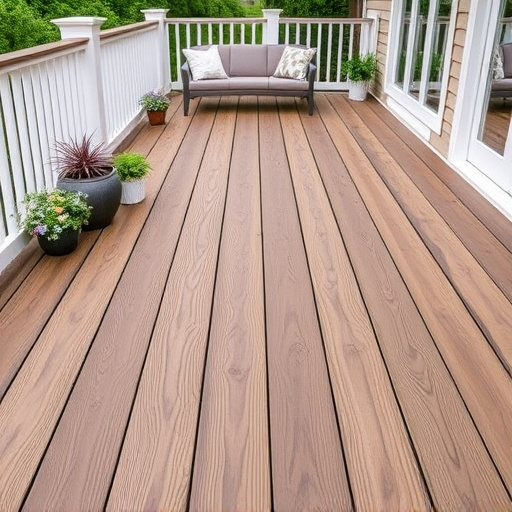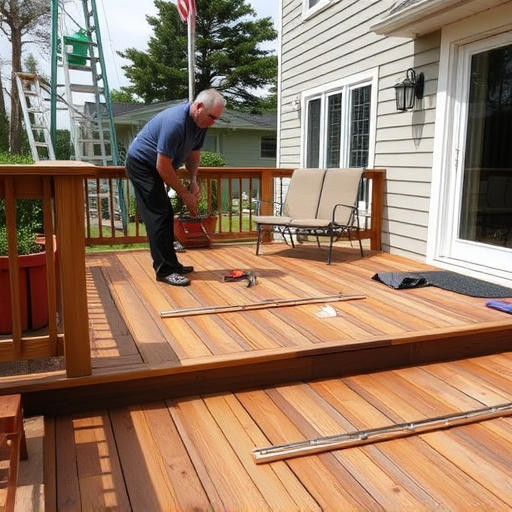When designing a deck, choose robust materials like composite decking for longevity and low maintenance. Prioritize functionality, layout, and natural light for a comfortable space. Use strategic color and texture combinations to enhance visual appeal and blend comfort with style in your deck design.
Transform your outdoor space with a stunning and functional deck! Our guide offers essential tips for creating a deck that seamlessly blends aesthetics and practicality. Discover the best materials for durability and style, master functional layout for optimal comfort and traffic flow, and learn how to incorporate color and texture for a visually appealing finish. Elevate your deck design journey today!
- Choosing the Right Materials for Durability and Style
- Functional Layout: Planning for Comfort and Traffic Flow
- Incorporating Color and Texture for Visual Appeal
Choosing the Right Materials for Durability and Style
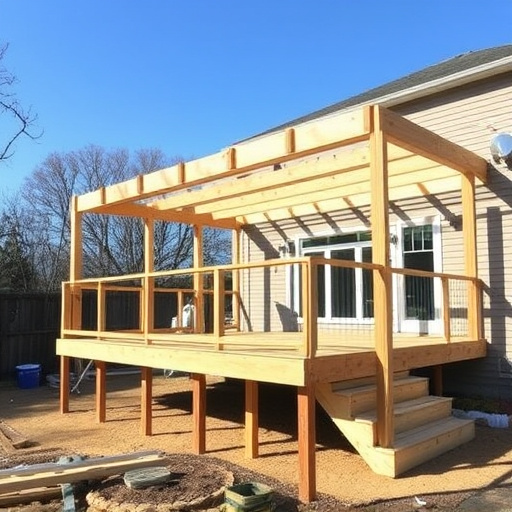
When designing a deck, selecting the right materials is paramount for both durability and aesthetic appeal. Natural wood offers a timeless look and feels inviting, but requires regular maintenance to withstand the elements. Alternatively, composite decking materials blend plastic and wood fibers, providing exceptional resistance to rot, mold, and pests, while still offering a variety of colors and styles that can complement any design taste.
Consider also the impact of your deck’s longevity on your budget. High-quality materials like commercial roofing-grade composites or treated lumber may carry a higher upfront cost, but their durability reduces the need for frequent repairs or replacements, even after accounting for storm damage repair. In fact, choosing durable materials can extend the life of your deck and potentially lower costs in the long run, making it a smart investment for any deck design project.
Functional Layout: Planning for Comfort and Traffic Flow
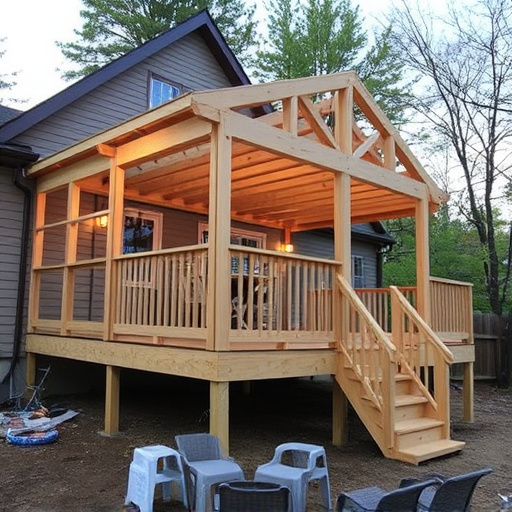
When designing a deck, functionality should always be at the forefront of your mind. One of the key aspects to consider is layout—creating a space that not only looks good but also facilitates comfortable movement and traffic flow. Start by envisioning how people will use the deck; whether it’s for casual gatherings, outdoor dining, or playtime. Ensure there’s enough room for chairs, tables, and any other furniture while maintaining a clear path for circulation. Avoid congestion by strategically placing seating areas, conversation clusters, and recreational spots to accommodate various activities and social dynamics.
Think about the flow of traffic from entry points to the deck and plan accordingly. Consider the direction of natural light and shade throughout the day; orient seating areas to maximize comfort while ensuring easy access for maintenance tasks like cleaning or siding replacement (whether it’s for residential or commercial properties). A well-planned layout ensures that your deck is not only a visually appealing addition but also serves as a functional outdoor living space that adapts to different needs and occasions.
Incorporating Color and Texture for Visual Appeal
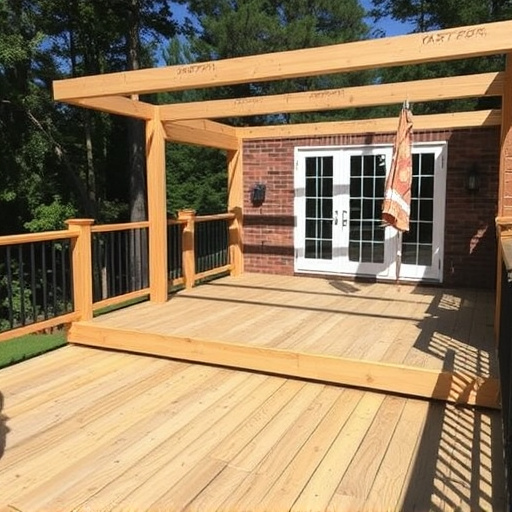
Incorporating color and texture is a powerful way to elevate your deck design from ordinary to extraordinary. When planning your deck’s aesthetics, consider how different colors can create depth and visual interest. A vibrant accent wall or a strip of contrasting trim can draw the eye and define specific areas. For instance, a deep navy blue or rich burgundy can add a touch of sophistication while still allowing natural elements like wood grain to shine through.
Texture plays an equally important role in deck design. Incorporate various materials such as natural stone, brick, or even woven textiles to create tactile contrast. A rough-hewn wooden floor paired with soft, plush cushions offers both comfort and visual appeal. Think about the overall atmosphere you want to create—a cozy retreat or a vibrant entertaining space—and choose textures that complement your desired theme. This attention to detail not only enhances the functionality of your deck but also makes it a more inviting and visually captivating outdoor living space.
When it comes to deck design, balancing functionality and aesthetics is key. By selecting durable materials, planning thoughtful layouts, and incorporating visually appealing colors and textures, you can transform your outdoor space into a functional and stylish sanctuary. Remember, the right deck design choices enhance both the beauty and usability of your deck, creating a vibrant and inviting environment for years to come.

